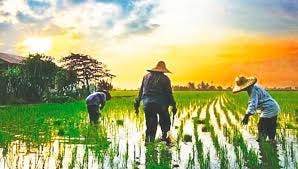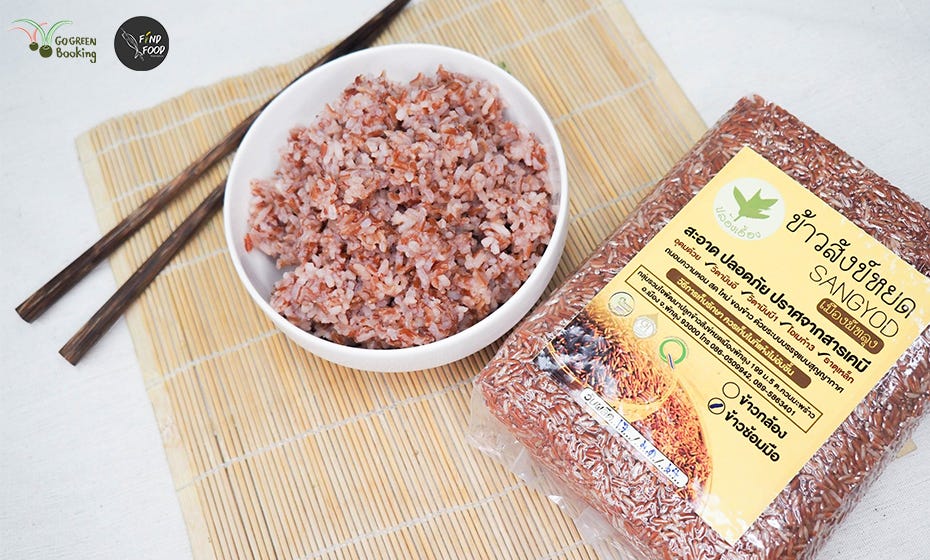
Murray Hunter
Draconian rice laws prevent agricultural innovation
JUN 21, 2024

Most Malaysians are aware of the monopoly on imports of rice. However, very few people, except those involved directly in the rice industry are aware that under the Control of Padi and Rice Act 1994, incorporating all amendments up to Jan 1 2006, the agriculture ministry’s director-general (DG) has complete control over the industry.
Under the laws and regulations, the DG can specify what species and strain of rice, farmers can (and can’t) cultivate, regulate the marketing of rice exclusively through nominated licensed wholesalers, retailers, specific rice millers, and exporters. The DG can also set maximum and minimum prices of rice, and control the disbursement of subsidies to farmers. Even the movement of rice is regulated.
This has grave implications for the productivity and vitality of Malaysia’s rice/padi industry.
As a food staple, which many people rely upon for sustenance, the cultivation, harvesting, milling and distribution of rice, without the DG’s permission, is an offence.
The present padi farmers are locked into a fixed system of contract harvesters, millers and distributors, which has been found to be wanting over the last few decades.
Lots of corruption and racketeering goes on in the industry. Some millers and distributors hoard, mix local to imported rice to bulk quantities up, siphon off subsidies and misrepresent the origin of rice in the retail market.
Padi farmers are basically prisoners of the system, and cannot do anything. There is not even the latitude for farmers to produce their own fertilisers to save money. They must follow and take what they are given. Then we wonder why Malaysians don’t want to be farmers.
The current padi/rice industry structure oppresses smallholders to the advantage of the cartels and monopolies in the industry. Smallholders have no say about what they can do with their own padi land.
Over the years, there have been a number of top-down ideas developed by consultants and bureaucrats in attempts to bring efficiency into the industry and improve productivity.
One of these was to set up “padi estates”, where smallholder land would be leased to create economies of scale in padi production, through high levels of automation. The idea sounds good, but the smallholders themselves would be employed as labourers on the estates, which many aged padi farmers see as demeaning and degrading.
The consultants and bureaucrats had no appreciation of the cultural aspects of padi production.
Another issue concerning the rice industry is that consumer tastes and preferences have radically changed over the last few decades.
There are various types of rice suitable for various dishes and cuisine types. Health and nutrition issues are now at the forefront in the minds of many consumers. The local padi/rice industry has taken account of this.
Innovation must be allowed to enter the padi/rice industry, both in production and the market. Together, this means a total relook at the current way the whole rice industry is viewed.
Paradigm change within the rice industry
If one views productivity as equal to the value created divided by the input costs, then perhaps it’s better to focus on adding value to basic rice products, in line with current consumer preferences. Such an approach would maintain the cultural integrity of smallholders.
Phatthalung is an agriculture-based province north of Songkhla Province that borders Kedah and Perlis. Just a decade ago, the local authorities visited villages in the province to assist rural communities in deciding what activities they could do best (The author was lucky to accompany some of these teams). The padi farmers could cultivate padi and some suppletory vegetables and fruits, and not much else.
The community developed a plan with assistance of the rural council, local agriculture department and regional universities to transform rice production, and to introduce supplementary activities into the village.

The farmers developed a cooperative to produce their own organic fertiliser and switched to some of their native brown rice varieties from the surrounding mountain areas and Songkhla Lake, which were found to be more in-line with consumer preferences, looking for healthy foods. They developed small scale mills and packed their products according to their regional names.
This is known as Geographical Indication (GI) marketing, where a regional or village name is used to brand products. Some of these Phatthalung rice varieties like Sung Yod Rice were registered and certified with the European Union. This enabled the community to export to Europe at more than double the price of conventional rice varieties. Brown, black and wild rice are very popular and sold online.
This was just the beginning. The area received tourists and villagers produced woven baskets and other products to sell to visiting tourists. Local tour operators promoted the villages as tourist attractions. Mud huts and traditional Thai wooden houses were built for home stay, where local food was home cooked for visitors.
The traditional milling of rice is now a major tourist attraction. Within Phatthalung today, there are a number of agro and eco-tourism village clusters that have greatly boosted local tourism in Thailand.
Some of these villages thrived and attracted the young back to manage these evolving businesses. Trading companies have been set up by some of them, collecting rice, mushrooms, other local vegetables and coffee, and marketing these products online throughout Thailand and overseas.
Phatthalung farming communities over the last decade have set up a farm to table production and distribution systems, which is owned by the local people, run by the local people, where all the profits go to the local people.
This is how many communities across the region are now reframing rice farming and agriculture.
Malaysia’s draconian rice regulations are preventing potential success stories like this in Malaysia. This is a great way of redistributing wealth back to marginal communities.
This is akin to the policies of communization ala Mao and Stalin.
ReplyDeleteU know fart about the policies of communization ala Mao and Stalin!
DeleteStalin's man-made famine caused the deaths of more than 2 million Ukrainians in the Holodomor.
Deletehttps://www.google.com/url?sa=t&source=web&rct=j&opi=89978449&url=https://holodomormuseum.org.ua/en/the-history-of-the-holodomor/&ved=2ahUKEwjAqomVvfCGAxWzUGwGHUW2BCMQFnoECC8QAQ&usg=AOvVaw0nrKkl6dnaohDMh1cjluoP
Mao's man-made famine caused the deaths of more than 30 million Chinese in the man-made Great Leap Forward and the Cultural Revolution.
The Great Famine in China, 1958-1962: A Documentary History
Drawing on previously closed archives that have since been made inaccessible again, Zhou Xun offers readers, for the first time in English, access to the most vital archival documentation of the famine. For some time to come this documentary history may be the only publication available that contains the most crucial primary documents concerning the fate of the Chinese peasantry between 1957 and 1962. It covers everything from collectivization and survival strategies, including cannibalism, to selective killing and mass murder.
by Xun Zhou
https://cnu.idm.oclc.org/login?url=https://ebookcentral.proquest.com/lib/cnu/detail.action?docID=3420877
Wakakakaka…
DeleteWhy quoted only skewed write-ups from unsubstantiated & unauthoritative wikipedia sources? & Xun Zhou too - a known CCP hater!
About that 'great famine' initiated by Mao, obviously u have never heard of the CIA Archives Chinas Great Leap Forward 1958 report!
Ooop… CIA has turned communist supporter!